 It can be tempting to stop exercising or even cut back on normal activities, such as walking, as hip osteoarthritis symptoms worsen. However, exercise is essential for reducing the risk of osteoarthritis and slowing its progress. Exercise not only helps you manage your weight, but it also improves strength, flexibility, and mobility. Low-impact exercises are less likely to put a strain on a damaged joint.
It can be tempting to stop exercising or even cut back on normal activities, such as walking, as hip osteoarthritis symptoms worsen. However, exercise is essential for reducing the risk of osteoarthritis and slowing its progress. Exercise not only helps you manage your weight, but it also improves strength, flexibility, and mobility. Low-impact exercises are less likely to put a strain on a damaged joint.
Clinical Study Results
Arthritis Association researchers looked at people with hip osteoarthritis who had done a 12-week exercise therapy program. The 71 patients did both class-based and in-home exercise programs. The goal was to strengthen the muscles around the hip. Stronger muscles will improve body balance and flexibility. After 3 months the participants had less pain and more mobility compared with the placebo group that received ultrasound treatment. The small study is just one in a larger body of research that strongly suggests people with hip osteoarthritis that do regular exercise have less pain and stiffness as well as improved hip mobility.
Strong Muscles Take the Stress Off the Hip Joint
Strong core muscles take the pressure off your spine and hip joints, which can help reduce arthritis pain and prevent additional joint damage. Strong core muscles can also increase stability and balance for your entire body. Hip osteoarthritis symptoms usually develop gradually as the hip joints cartilage wears down over time. If you sit around and do nothing you will lose vital strength and mobility. If you do not exercise your muscles will get weaker and more force will go into the arthritic hip joint.
Exercise Probably Won’t Make Hip Arthritis Worse
For most people, this worry is unfounded. In fact, research suggests you can walk for at least 10,000 steps (roughly 5 miles) each day without doing additional damage to your arthritic hip joint. Choose an exercise routine you enjoy there are many to choose form. Workouts at the gym, yoga, tai chi, water aerobics, or more moderate activity such as short walks throughout teach day are all good programs.
A Doctor Can Help
It is best to see a doctor and be examined to make sure hip osteoarthritis is the only cause for your hip pain. If it is more than likely physical therapy will be prescribed. The goal will be to strengthen the hips’ supportive muscles, increase the hip’s range of motion, and improve the hip’s function.
Other Hip Arthritis Treatment May Be Necessary
Your weight can have a big impact on arthritis symptoms. Extra weight puts more pressure on your joints, especially your hips. A treatment plan may include losing excess weight, exercising, and using oral or topical pain relievers or corticosteroid injections. If non-surgical treatment fails to relieve hip pain over time, your doctor may suggest surgery.
For persistent joint pain that is interfering with your daily activities, see a Tristate rheumatologist to make the correct diagnosis and begin the proper treatment.
Contact Us (859-331-3100) For More Information to Request an Appointment
—
 About Tristate Arthritis and Rheumatology
About Tristate Arthritis and Rheumatology
Tristate Arthritis and Rheumatology is first and largest Rheumatology practice in the Northern Kentucky area. Founded by Dr. Arthur Kunath in 1986, our rheumatology practice now consists of six doctors who are board certified in both Internal Medicine and Rheumatology and a Physician Assistant. Patients see one doctor (except in emergencies), thereby assuring continuity of care and an individualized doctor-patient atmosphere giving the physician the ability to establish personalized and detailed relationships. Our doctors have received numerous awards, including being listed as “Top Doctors” in Cincinnati Magazine, receiving the Patient’s Choice Award, the Most Compassionate Doctor Award, and the American College of Rheumatology’s “My Doc Rocks” award.
>> Learn More


